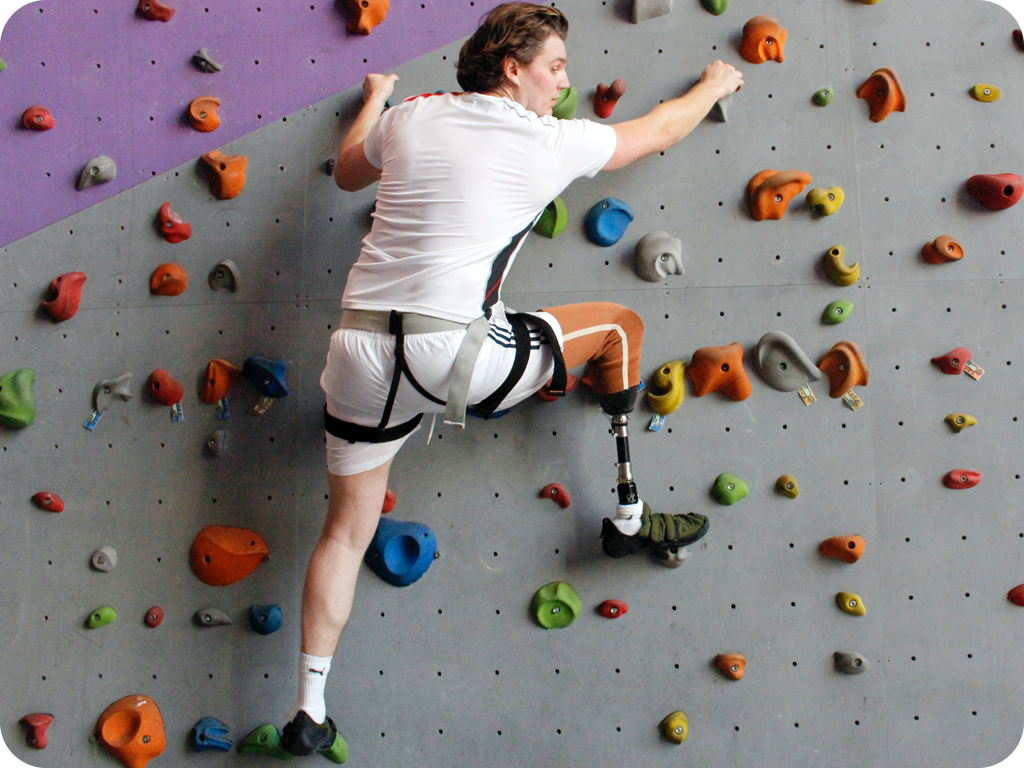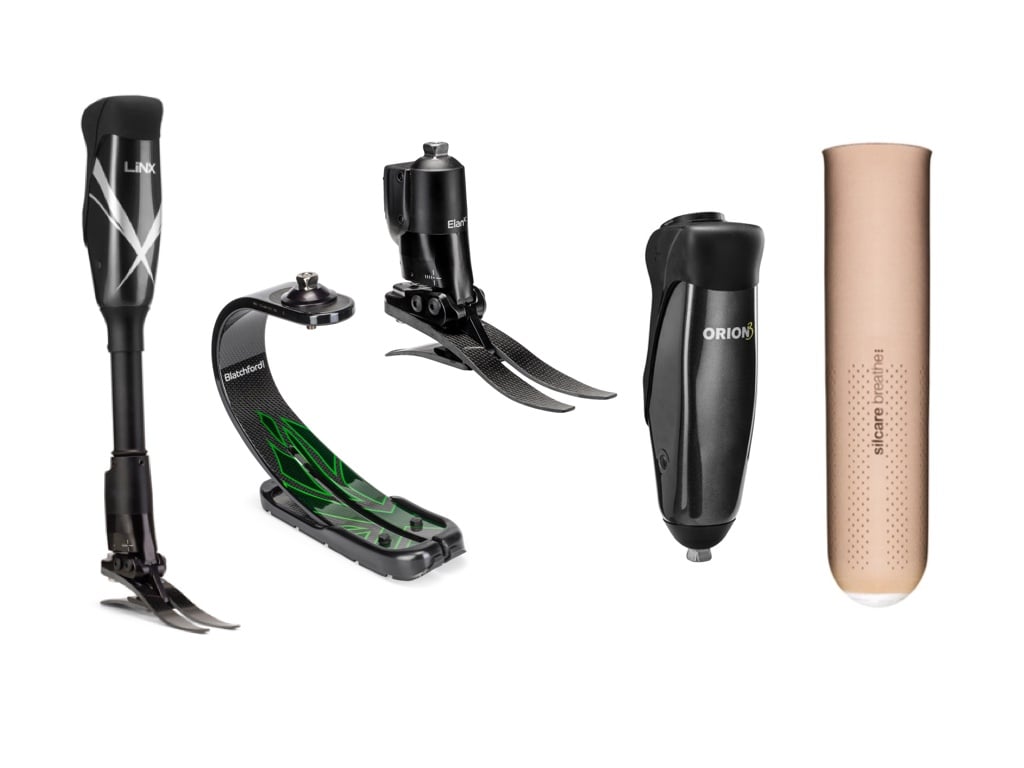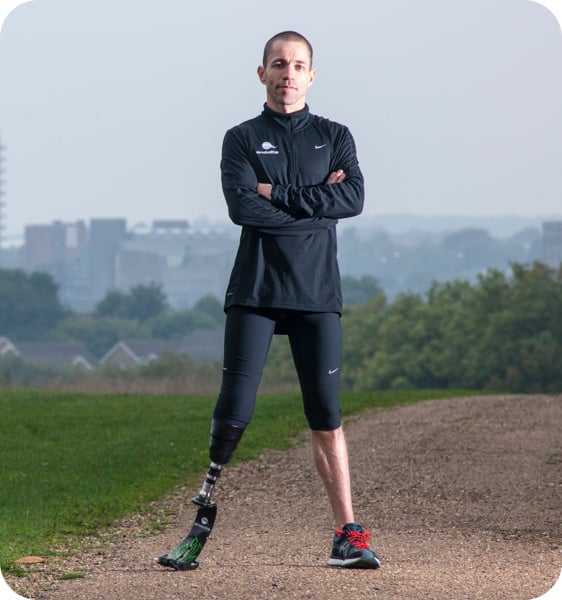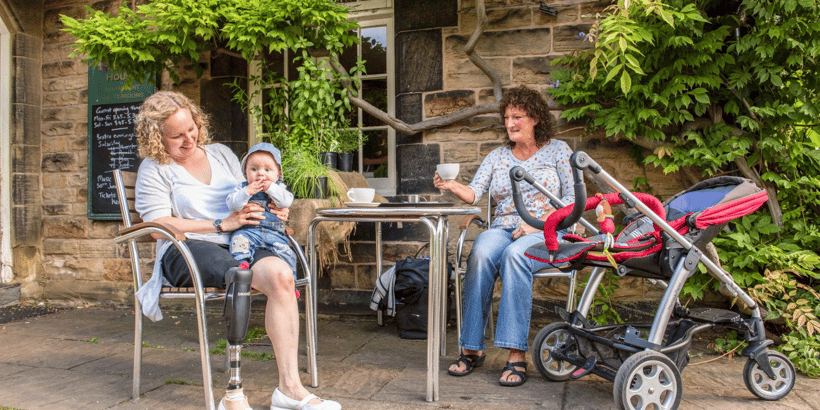FAQs
Frequently Asked Questions (FAQs)
-
What are artificial limbs called?
Prosthetics or prosthesis. You may also hear the term "bionic" or a micro-processor-controlled limb.
-
What are prosthetics made of?
Prosthetics are made of strong, yet lightweight materials such as carbon fibre and sturdy plastic. Most artificial limbs have shock absorbing capabilities and can help with balance and uneven terrain.
Some of our feet, ankle and knee products contain hydraulics and e-carbon springs for ground compliance and energy return. Others contain a multi-axial components, while others are computer-controlled. All of our designs mimic the natural movement of the human leg.
Every patient is unique, so the prosthetist (the doctor specializing in prosthetics) will customise the patient's prosthetic to fit their walk (gait) and the way they stand (stance).

-
How does a prosthetic work?
After the residual limb (the limb wearing the prosthesis) is fitted for a carbon fibre socket, the prosthetist will want to help the patient find the best fit, good suspension (staying on) and to provide even distribution to protect the limb.
They will attach the endo skeletal adjustable components for the foot, ankle and knee. The prosthetist will have the patient come back to the office for adjustments on a regular basis.
The prosthetist will study the patient’s locomotion and gait and try to make the patient as comfortable and as well-balanced as possible...trying to replicate their natural leg swing and foot strike.
-
How do I know what kind of lower limb prosthetic will work best for me?
The Amputee Coalition's website states, "For the transfemoral (above-knee, including hip and knee disarticulation) amputee, successful function depends on selecting the correct knee to fit the person’s age, health, activity level and lifestyle.
The latest or advanced knee is not necessarily the best choice for everyone. For some amputees, safety and stability are more important than functional performance. Active amputees, on the other hand, prefer a knee that will give them a higher level of function even if it requires greater control."
-
What type of prosthetics does Blatchford make?
We design and manufacture lower limb prosthetics that are made to wear either above the knee amputation (AKA) or a below the knee amputation (BKA).
We design and manufacture prosthetic feet, ankles, knees and entire lower limb systems.
-
How do artificial limbs (prosthetics) work?
Hydraulics
Some of Blatchford's designs incorporate hydraulics, which mimic lower limb muscles, and help to reduce socket pressures and potential tissue damage. These types of prosthetics generate vacuum as the amputee walks, helping promote suspension and stability. They are quiet, adjustable and battery-free.Microprocessor-Controlled (Computerised)
Blatchford also makes microprocessor-controlled ankles, knees and limb systems. These systems monitor the patient movement and they adapt to speed and terrain. They assist up slopes and brakes downhill.These "computerised" ankles mimic natural muscle resistance and ankle motion in real time.
Our Orion3 knee even switches to stumble recovery mode the moment the knee stops flexing.
Many of our products are waterproof as well!
-
Can amputees run or workout on a lower limb prosthesis?
Yes, we design a variety of options that include knees, ankles, feet and entire limb systems that all work together. Some of our more advanced products allow the amputee to walk and exercise and even get wet.
Some of our products, such as our BladeXT and Elite BladeVT are made to harness impact and return energy so it's easier to stay or become more active. The Elite BladeVT reduces socket pressure coming from dynamic sports.

-
How much does an artificial leg cost?
Lower limb prosthetic devices are usually partially or entirely covered by the amputee's medical insurance provider. Work closely with the insurance company to check the policy coverage for a prosthesis and know the limitations and exclusions of the policy.
A prosthetist bills the medical insurance provider, not only for the device, but also for the proper fit and alignment, all as one total cost. Proper fit and alignment may require several trips to the prosthetists office.
The cost for a prosthetic leg can range anywhere from $5,000 to $50,000. Every patient should get the lower limb prosthesis they need, when they need it. Blatchford and RePaytient have united to offer a service that will make sure this can happen. Ask your prosthetist for details. -
Can a patient buy a prosthetic directly from Blatchford?
After the prosthetist meets with the patient and decides on the device that best suits the patient, the prosthetist can reach out to us directly. Any O&P clinic or licensed orthotist and prosthetist can reach out to Blatchford by calling 1-937-291-3636 to place an order.
If your prosthetist has not worked with us before, we will send one of our staff prosthetists or representatives to help the patient and prosthetist fit and demo the new lower limb device together.
The Blatchford Community
For over 130 years Blatchford has designed and produced some of the world's most advanced artificial limbs and mobility solutions. Learn more about resources available to help you and/or the amputee in your life!

Have a question that's still unanswered?
We're committed to helping you understand the world of prosthetics and orthotics. Simply pop your question below and one of our team will get back to you with an answer.
